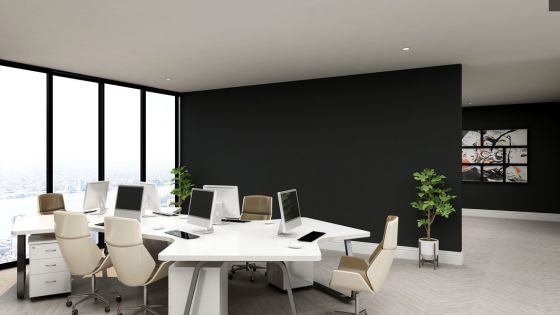Think about the offices your parents might have worked in: rows of cubicles, the same desk every day, and not much room for creativity. Now compare that to today’s offices, which look more like coffee shops mixed with tech hubs. The idea of a “flexible workspace” is all about designing offices that adapt to how people actually work. Some people need quiet, some need collaboration, and others like to move around during the day. A flexible office brings all of that together, making work feel less like a chore and more like a place to create.

Blending Remote and On-Site Work
Lots of people don’t work in the office full-time anymore. Hybrid work, splitting time between home and office, is the new normal. To keep up, offices are getting creative. You’ll find hot desks (desks anyone can use), comfy spaces for video calls, and tech-loaded meeting rooms. This way, remote workers and in-office teams can connect without hiccups. It’s not about forcing everyone into one routine. It’s about building a space where both in-person collaboration and remote teamwork feel easy. A flexible setup makes everyone feel like part of the team, no matter where they are.
Technology at the Core
Here’s the truth: without tech, flexible workspaces wouldn’t even exist. Offices now run on smart tools, apps to book meeting rooms, sensors that adjust lights, and air systems that keep the office fresh. But all this connected tech also needs protection. Hackers can target office systems, which is why companies use threat intelligence from groups like Red Canary to spot risks before they become problems. Think of it like having a digital guard dog keeping the office safe. With strong security, teams can focus on work instead of worrying about tech breakdowns.
Spaces for Focus and Collaboration
Flexibility doesn’t mean chaos. It means options. Some days you need a quiet corner to finish a report. On other days, you want a brainstorming session with your team in a casual lounge. Flexible workspaces make that possible. You’ll see open areas for big ideas, soundproof booths for private calls, and even soft chairs in break zones for casual chats. This variety helps people work the way they work best. After all, not everyone thrives in the same kind of space, and the future office finally gets that.
Sustainability and Well-Being
A great office doesn’t just help people work better. It also helps them feel better. Natural light, plants, and eco-friendly designs aren’t just trendy; they actually improve mood and productivity. Flexible layouts mean businesses can grow or shrink without tearing down walls or wasting space, which saves money and resources. Add in perks like standing desks, ergonomic chairs, and chill-out areas, and you’ve got a workplace that’s healthier for both employees and the planet. When people feel comfortable and cared for, they’re happier and more motivated. It’s a win-win for everyone.
The Next Chapter in Office Design
So what’s next? Offices will keep getting smarter. Imagine AI that predicts how much space a team needs, or virtual reality meetings where remote workers feel like they’re sitting at the same table. Flexibility won’t just be about furniture. It’ll be about culture. Trust, choice, and creativity will drive the workplaces of tomorrow. Companies that get this right will attract the best talent and be ready for whatever comes next. The future office isn’t boring. It’s built to adapt, inspire, and connect people in new and exciting ways.
